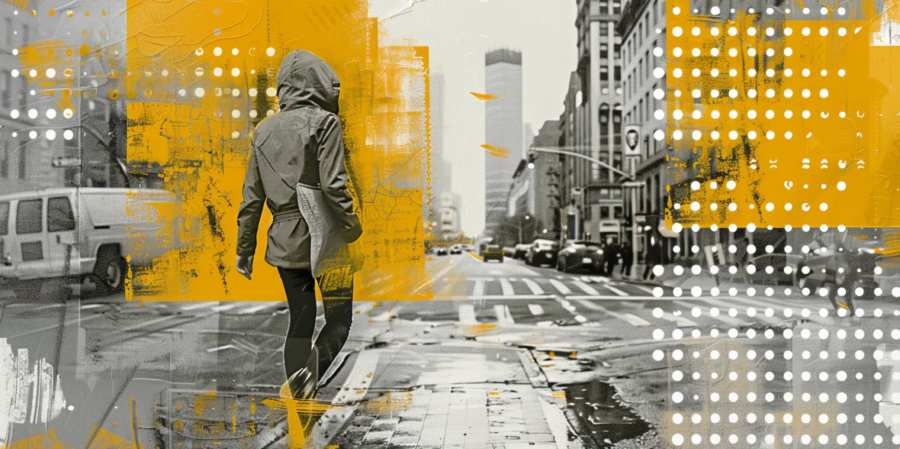How to Train Your Photographer's Eye by Walking Without a Camera
 Walk around long enough without a camera and you’ll start to see things. Not hallucinations—though those might come too if you skip lunch—but the kind of visual quirks, alignments, and little dramas that usually dart past unnoticed. It’s not magic. It’s attention, and it’s the most underrated part of photography. This is about walking without the weight of gear, without the internal monologue about f-stops, and without the reflex to lift a lens every time something vaguely interesting happens. No camera, just eyes. It’s training, and it works.
Walk around long enough without a camera and you’ll start to see things. Not hallucinations—though those might come too if you skip lunch—but the kind of visual quirks, alignments, and little dramas that usually dart past unnoticed. It’s not magic. It’s attention, and it’s the most underrated part of photography. This is about walking without the weight of gear, without the internal monologue about f-stops, and without the reflex to lift a lens every time something vaguely interesting happens. No camera, just eyes. It’s training, and it works.
The Rules of the Game (Which Don’t Involve Actual Rules)
First, let’s clarify. This isn’t a meditative stroll through a field where you’re supposed to absorb the vibes. This is active observation. A mental camera, always cocked. You walk, and as you move, you frame. You notice that man’s umbrella poking out of his tote bag at the perfect diagonal. You catch the reflection of a red traffic light in a puddle and how it lines up with someone’s shoes. Mentally, you press the shutter.
Don’t worry if people look at you weird for pausing and squinting at a cracked wall for too long. They’ll assume you're scouting for some kind of secret graffiti app. Or just European.
Why This Works Better Than You’d Think
When you don’t have a camera, there’s nothing to fiddle with. No battery to die, no lens cap to misplace. Your brain is your only tool, and for once, it’s actually the sharpest one in your bag. You start composing with your eyes. You look for contrast, symmetry, gesture, odd juxtapositions—without the pressure of “getting the shot.”
It’s a bit like rehearsing lines before a performance. The repetition, the practice, the mental muscle memory—it all builds a sharper, faster, more intuitive photographic instinct. And when you *do* pick up your camera again, you’ll find your fingers moving more confidently, your eye recognizing compositions more quickly, and your shots just... better.
Places That Reward This Kind of Looking
Your neighborhood, your commute, the grocery store parking lot at 4:53 PM on a Tuesday—these are goldmines. You don’t need the Taj Mahal. In fact, the Taj Mahal is probably too obvious. Look at a row of parked bikes and the way one helmet dangles. The slouch of someone waiting for a bus. The brief geometry of people passing each other in opposite directions.
You’re not trying to capture a spectacle; you’re learning to recognize rhythm. Patterns. Disruptions. Visual beats.
How to Avoid Feeling Like a Creep
It must be said: walking around intensely observing things and people can land you some strange glances. Soften your posture. Don’t wear a trench coat unless you're actually in a noir film. Smile occasionally—unless you're studying hard shadows, in which case a brooding frown may actually suit the mood.
This isn’t surveillance. It’s visual literacy. And it’s best done with a spirit of curiosity, not judgment. You're not here to judge outfits or overhear conversations. You're here to see how light hits a building, how faces react to sudden gusts of wind, how color blocks fall across a window.
Exercises to Sharpen the Eye
You can up the challenge with a few structured games. Try one of these on your next walk:
- Pick one color and try to spot it in ten wildly different places.
- Focus on shadows only—ignore the objects casting them.
- Look for visual pairs: two people, two signs, two items that accidentally rhyme visually.
- Mentally shoot only vertical frames for the day—it’ll change what you notice.
Each of these pushes your eye into different patterns of seeing. Think of them like stretching exercises for your vision. Only less embarrassing.
What You Gain When You Can’t Take Anything Home
There’s something liberating about not being able to show anyone what you saw. No performance pressure. No “likes.” You don’t get to prove your eye is improving. You just have to trust the process—and yes, that’s uncomfortable. But it’s also how you learn to photograph for yourself, not for an algorithm.
The mental catalog builds. Next time you’re out with a real camera, you’ll recall that strange shadow pattern from the alley behind the pharmacy. You’ll remember the color combo that accidentally worked so well on the laundromat sign. Your brain becomes a sketchbook.
Some of the best photographers don’t actually talk much about photography. They talk about movement, shape, energy, timing. Those are muscles you build by seeing first, shooting later.
When to Bring the Camera Back In
Eventually, yes, you should return to actual photography. This isn’t a monastic life choice. But the idea is to come back with sharper instincts and less dependence on luck. You’ll spend less time spraying frames and more time knowing—viscerally—what will work before the shutter clicks.
Try alternating: one walk with a camera, one without. Let them inform each other. Let your “no-camera” walks push you into new visual territory. Then, when you do shoot, you’ll see differently.
It’s like adding spices to a dish you’ve made the same way for years. Suddenly, it tastes like something else entirely. Something smarter.
Shot in the Mind, Filed in the Brain
Let’s not pretend mental photos will ever hang on a gallery wall or sell as prints. That’s not their job. But they do sharpen your real ones. They’re the training montage, the private rehearsals, the trial runs.
Also, they’re deeply satisfying in a quiet, personal way. You see something exquisite—a woman’s coat flaring in the wind just as a bus mirror reflects her posture—and you capture it. Not with a sensor, but with intention. That moment belongs to you. It didn’t need to be frozen to matter.
Shutter Without the Click
Think of it as photography’s version of air guitar. You’re not holding the real thing, but your form improves every time. You don’t need gear to practice seeing. You need time, motion, and the willingness to pay closer attention.
Besides, when was the last time you really looked at the way leaves clutter at the edge of a crosswalk? Or the way someone’s silhouette fits perfectly into a billboard behind them as they turn? You don’t have to capture it. You just have to see it.
Turns out, that’s the hard part. And the best part.
|
|







 Walk around long enough without a camera and you’ll start to see things. Not hallucinations—though those might come too if you skip lunch—but the kind of visual quirks, alignments, and little dramas that usually dart past unnoticed. It’s not magic. It’s attention, and it’s the most underrated part of photography. This is about walking without the weight of gear, without the internal monologue about f-stops, and without the reflex to lift a lens every time something vaguely interesting happens. No camera, just eyes. It’s training, and it works.
Walk around long enough without a camera and you’ll start to see things. Not hallucinations—though those might come too if you skip lunch—but the kind of visual quirks, alignments, and little dramas that usually dart past unnoticed. It’s not magic. It’s attention, and it’s the most underrated part of photography. This is about walking without the weight of gear, without the internal monologue about f-stops, and without the reflex to lift a lens every time something vaguely interesting happens. No camera, just eyes. It’s training, and it works.